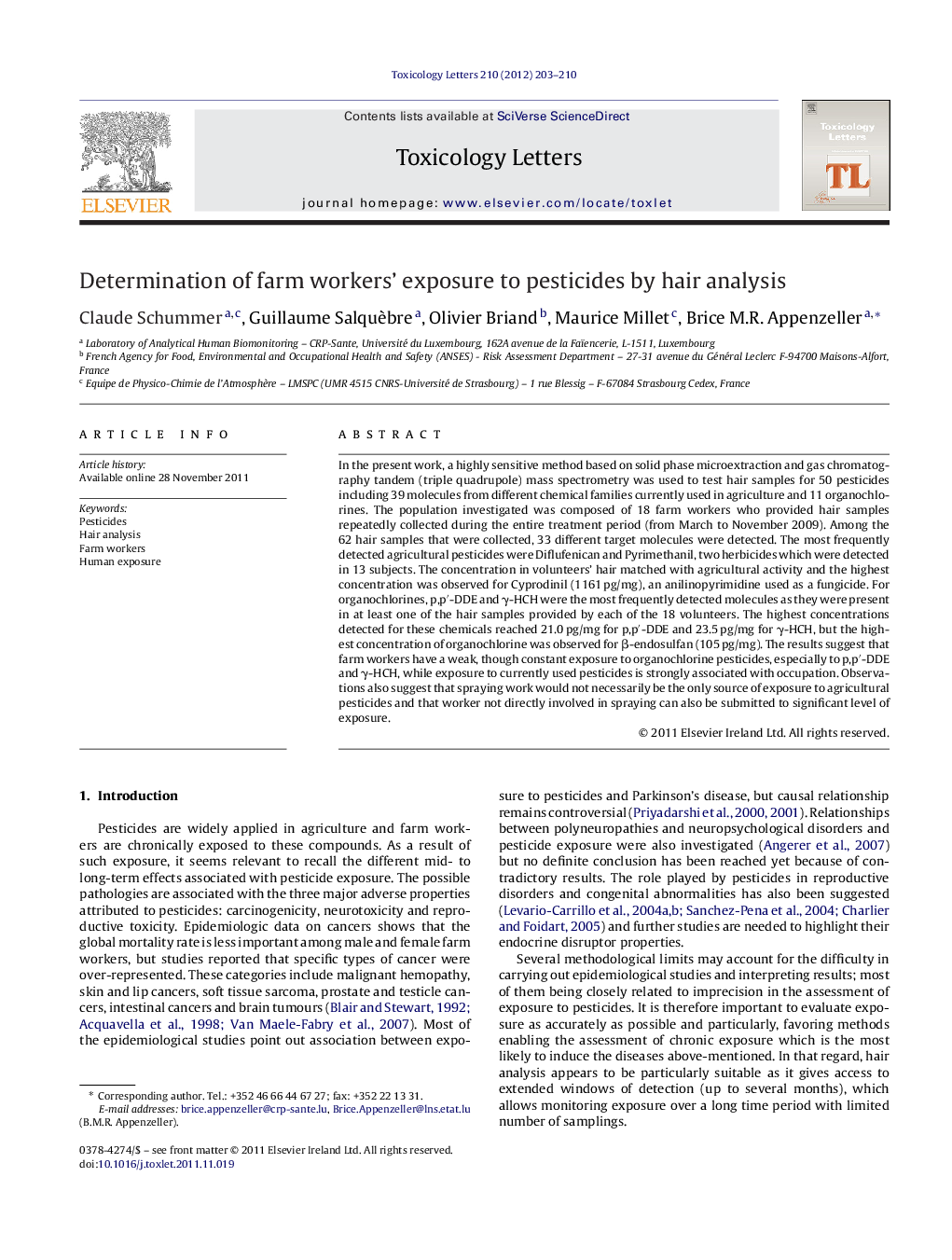| Article ID | Journal | Published Year | Pages | File Type |
|---|---|---|---|---|
| 2599782 | Toxicology Letters | 2012 | 8 Pages |
In the present work, a highly sensitive method based on solid phase microextraction and gas chromatography tandem (triple quadrupole) mass spectrometry was used to test hair samples for 50 pesticides including 39 molecules from different chemical families currently used in agriculture and 11 organochlorines. The population investigated was composed of 18 farm workers who provided hair samples repeatedly collected during the entire treatment period (from March to November 2009). Among the 62 hair samples that were collected, 33 different target molecules were detected. The most frequently detected agricultural pesticides were Diflufenican and Pyrimethanil, two herbicides which were detected in 13 subjects. The concentration in volunteers’ hair matched with agricultural activity and the highest concentration was observed for Cyprodinil (1161 pg/mg), an anilinopyrimidine used as a fungicide. For organochlorines, p,p′-DDE and γ-HCH were the most frequently detected molecules as they were present in at least one of the hair samples provided by each of the 18 volunteers. The highest concentrations detected for these chemicals reached 21.0 pg/mg for p,p′-DDE and 23.5 pg/mg for γ-HCH, but the highest concentration of organochlorine was observed for β-endosulfan (105 pg/mg). The results suggest that farm workers have a weak, though constant exposure to organochlorine pesticides, especially to p,p′-DDE and γ-HCH, while exposure to currently used pesticides is strongly associated with occupation. Observations also suggest that spraying work would not necessarily be the only source of exposure to agricultural pesticides and that worker not directly involved in spraying can also be submitted to significant level of exposure.
► We investigated farm workers exposure to pesticides by hair analysis. ► Subjects exposure to both current-use and persistent pesticides was demonstrated. ► Qualitative and quantitative inter-individual differences were observed. ► We confirm the usefulness of hair analysis for biomonitoring of pesticide exposure.
